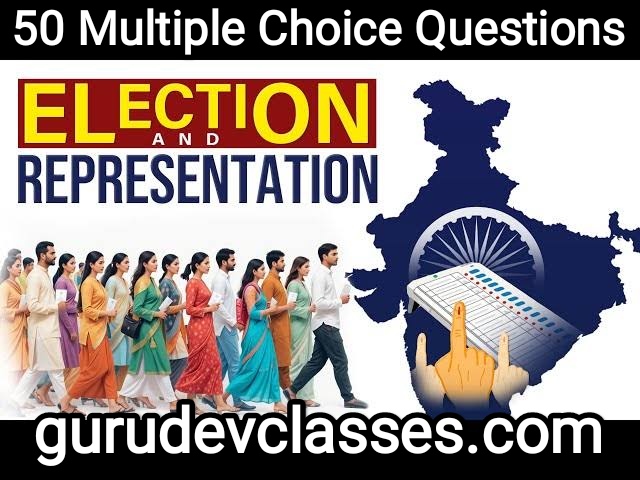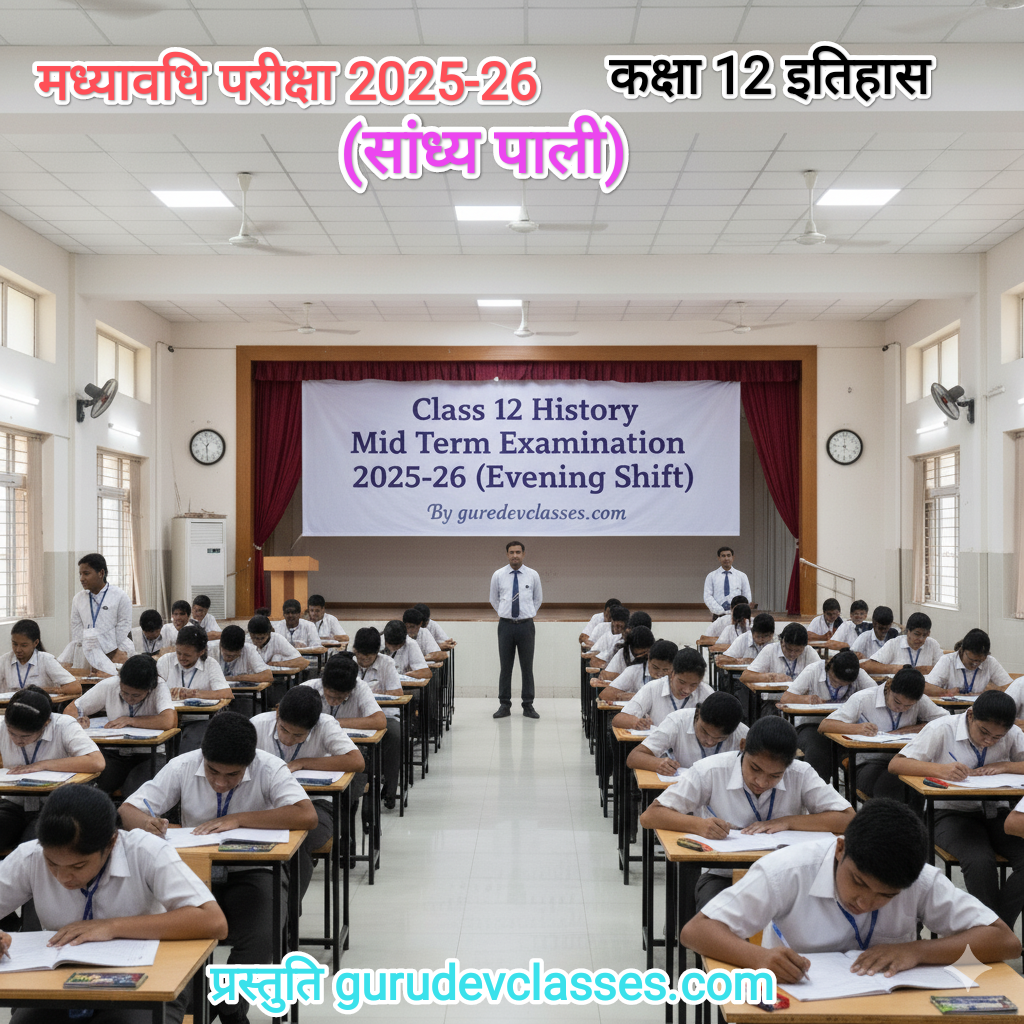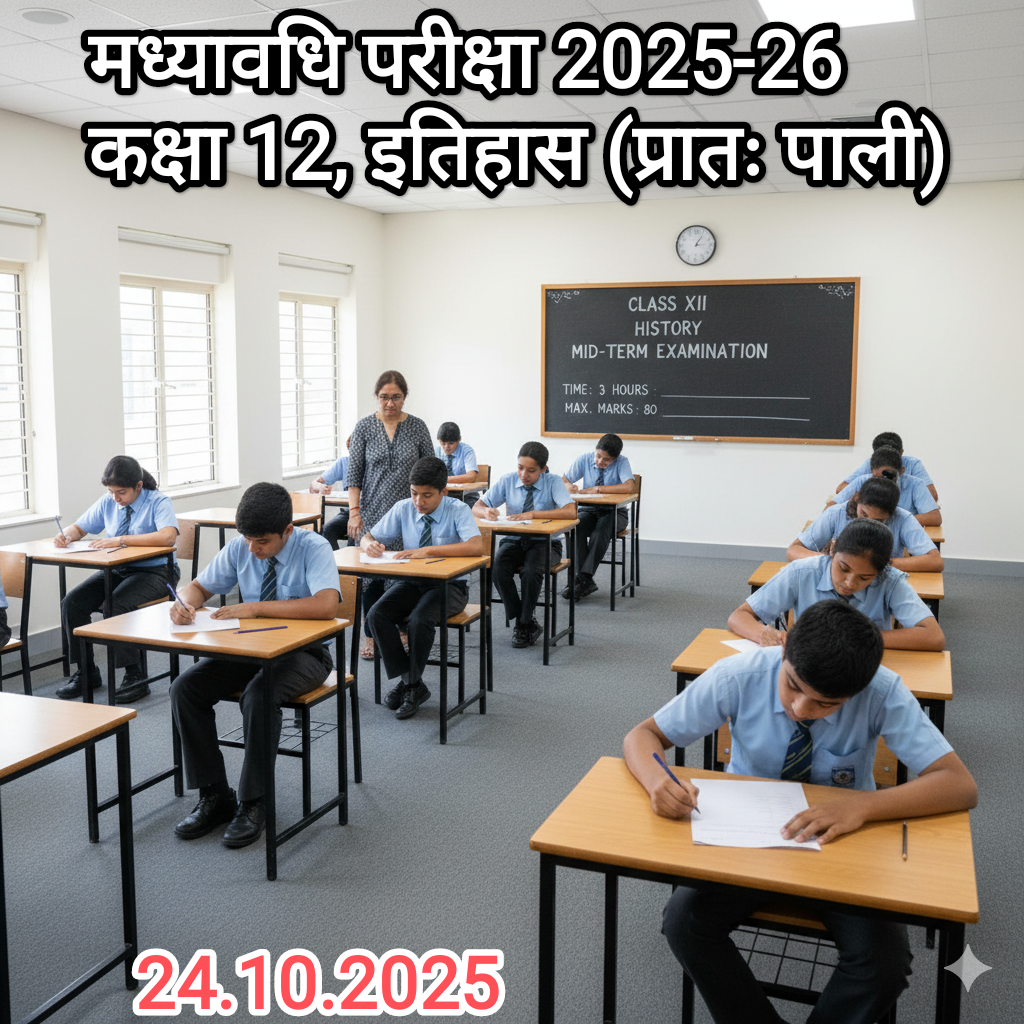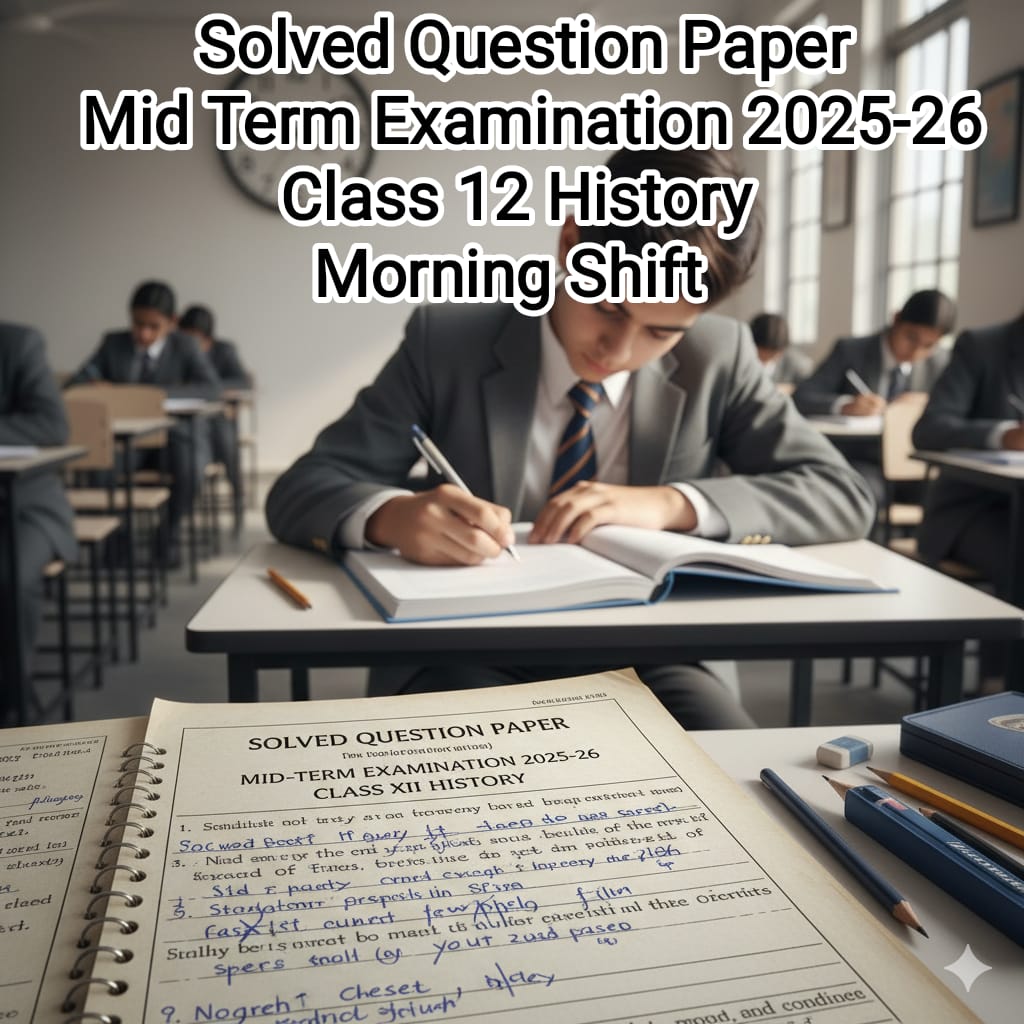Q1. Which article of the Indian Constitution provides for the composition of the Election Commission of India?
a) Article 324
b) Article 356
c) Article 370
d) Article 368
Ans: a) Article 324 – It vests the superintendence, direction, and control of elections in the Election Commission of India.
Q2. Which elections in India are conducted by the State Election Commission and not by the Election Commission of India?
a) Lok Sabha elections
b) State Legislative Assembly elections
c) Municipal elections
d) Rajya Sabha election
And: C) Municipal elections – Local body elections (Municipalities, Panchayats) are conducted by State Election Commissions, not the ECI
Q3. The 73rd Amendment of the Constitution of India provides constitutional status to which level of local government?
a) Gram Sabha
b) Municipal Corporation
c) District Panchayat
d) Zilla Parishad
Answer: c) District Panchayat – The 73rd Amendment gave constitutional status to Panchayati Raj institutions (Gram Sabha, Panchayats at district/block levels).
Q4. The Election Commission of India conducts elections to which of the following?
a) Income Tax Office
b) Union Public Services Commission
c) Controller General of Accounts
d) Members of Legislative Assemblies (MLAs)
Answer: d) Members of Legislative Assemblies (MLAs) – ECI conducts elections for President, VP, Lok Sabha, Rajya Sabha, and State Assemblies.
Q5. What is the minimum age requirement to contest the Lok Sabha elections in India?
a) 21 years
b) 25 years
c) 30 years
d) 35 years
b) 25 years – Minimum age to contest Lok Sabha elections is 25 years (Article 84).
Q6. Which electoral system does India follow for its Parliamentary elections?
a) Proportional Representation System (PRS)
b) Majoritarian System
c) First Past the Post (FPTP) System
d) Mixed Electoral System
Answer: c) First Past the Post (FPTP) – India follows simple majority (plurality) system.
Q7. Which body issues the ‘Model Code of Conduct’ during elections?
a) Prime Minister
b) President
c) Election Commission of India
d) Chief Justice of India
Answer: c) Election Commission of India – It issues the Model Code of Conduct to ensure free & fair elections.
Q8. In India, who can vote under the concept of Universal Adult Franchise?
a) Minors too
b) Only educated people
c) Foreign nationals also
d) Adults with Indian nationality, regardless of caste, colour, creed, or gender
Answer: d) Adults with Indian nationality – Universal Adult Franchise allows all citizens 18+ to vote regardless of caste, religion, gender.
Q9. Which of these is not a reason that Indian elections are considered democratic?
a) India has the largest number of voters
b) India’s Election Commission is very powerful
c) Everyone above 18 has the right to vote
d) Losing parties refuse to accept the verdict
Answer: d) Losing parties refuse to accept the verdict – This is against democratic elections, hence not true for India.
Q10. Which country follows the FPTP electoral system?
a) Israel
b) United Kingdom
c) Netherlands
d) Argentina
Answer : b) United Kingdom – UK (like India) follows FPTP system.
Q11. The authority that issues the notification for elections is:
a) Prime Minister
b) President
c) Governor
d) Chief Election Commissioner
Answer: b) President – Issues formal notification for parliamentary elections.
Q12. After polling finishes, votes are counted under the supervision of:
a) Election Commission
b) Polling Officer
c) Returning Officers and Observers
d) Delimitation Officer
Answer: c) Returning Officers and Observers – They supervise vote counting under ECI.
Q13. The minimum voting age was 21 years until:
a) 1984
b) 1987
c) 1989
d) 1990
Answer: c) 1989 – By the 61st Amendment Act, 1988, voting age reduced from 21 to 18 (implemented from 1989 elections).
Q14. Territorial representation means:
a) Geographical representation
b) Minority representation
c) Functional representation
d) Class representation
a) Geographical representation – Territorial representation means electing representatives based on geographical constituencies.
Q15. The FPTP system is also known as:
a) Proportional Representation
b) Direct election
c) Separate electorate
d) Plurality system
Answer: d) Plurality system – FPTP is also called plurality/majority system.
Q16. Which argument is against Universal Adult Franchise?
a) It is democratic
b) Ensures political equality
c) Makes people politically awakened
d) Inculcates anti-nationalism
Answer: d) Inculcates anti-nationalism – This is not a valid argument; hence it is against universal franchise.
Q17. The minimum age limit for exercising the right to vote in India is:
a) 18 years
b) 25 years
c) 21 years
d) 20 years
Answer: a) 18 years – Minimum voting age after 61st Amendment.
Q18. The present composition of the Election Commission is a:
a) As decided by President
b) One-member body
c) Two-member body
d) Three-member body
Answer: d) Three-member body – Since 1993, ECI is a three-member body (Chief Election Commissioner + 2 Commissioners).
Q19. When did the Election Commission of India get two additional Election Commissioners?
a) 1987
b) 1989
c) 1990
d) 1993
Answer: c) 1990 – Two additional commissioners were first appointed in 1989, but permanent system began in 1993.
Q20. Universal adult franchise excludes which of the following groups?
a) All adults aged 18+
b) Citizens with criminal convictions
c) Nationals living abroad
d) None of the above
Answer: b) Citizens with criminal convictions – Some categories (like convicted prisoners, mentally unsound persons) are excluded.
Q21. Which principle ensures that each constituency has roughly equal voter population?
a) Gerrymandering
b) Delimitation
c) Reservation
d) Plurality system
Answer: b) Delimitation – Adjusts constituency boundaries to maintain equal population.
Q22. The term ‘representative democracy’ refers to:
a) Direct voting on every issue
b) Electing representatives to act on behalf of the people
c) President making decisions
d) Monarchic rule
Answer: b) Electing representatives – Representative democracy = citizens elect leaders to make decisions for them.
Q23. Who can invalidate an election in case of malpractice?
a) President
b) Supreme Court
c) Election Commission
d) Prime Minister
Answer: b) Supreme Court – Only courts can invalidate elections if malpractices are proven.
Q24. Delimitation Commission deals with:
a) Setting election dates
b) Drawing constituency boundaries
c) Counting votes
d) Conducting exit polls
Answer: b) Drawing constituency boundaries – Main task of Delimitation Commission.
Q25. One major criticism of FPTP system is:
a) Too many representatives
b) No majority required
c) Can lead to unrepresentative outcomes
d) Based on proportional vote share
Answer:: c) Can lead to unrepresentative outcomes – Example: a candidate winning with only 30–35% votes.
Q26. The term ‘electoral roll’ means:
a) List of polling booths
b) List of registered voters
c) List of candidates
d) List of constituencies
Answer: b) List of registered voters – Electoral roll = official voter list.
Q27. What ensures fairness during elections?
a) Political interference
b) Free and fair polling
c) Media bias
d) Delayed counting
Answer: b) Free and fair polling – Ensures fairness and legitimacy.
Q28. Option to NOT vote is known as:
a) Abstention
b) Franchise
c) Electorate
d) Mandate
Answer: a) Abstention – Right to NOTA (None of the Above) or abstaining from voting.
Q29. Reservation in elections refers to:
a) Delay in polls
b) Quotas for SC/ST/OBC in representation
c) Advance voting options
d) Booking polling stations
Answer: b) Quotas for SC/ST/OBC – Seats reserved in Parliament/Assemblies.
Q30. What is NOT a function of the Election Commission?
a) Conducting elections
b) Issuing election notification
c) Campaign financing regulations
d) Law making
Answer: d) Law making – ECI conducts elections, but it doesn’t make laws (Parliament does).
Q31. FPTP favours which type of parties?
a) Small regional parties
b) Large parties with concentrated support
c) Independent candidates only
d) Nationwide coalitions
Answer: b) Large parties with concentrated support – FPTP benefits dominant parties.
Q32. Which system is more representative of vote share?
a) FPTP
b) Proportional Representation (PR)
c) First Past the Post
d) Delimitation
Answer: b) Proportional Representation (PR) – PR reflects real vote share better than FPTP.
Q33. Model Code of Conduct applies from:
a) Election announcement date
b) Polling day
c) Counting day
d) Post-election day
Answer: a) Election announcement date – MCC applies immediately after ECI announces schedule.
Q34. Which is NOT a feature of a democratic election?
a) Regular intervals
b) Secret ballot
c) Free press
d) Lifetime tenure
Answer: d) Lifetime tenure – Against democracy; elections must be periodic.
Q35. What ensures voter identity verification?
a) Aadhar only
b) Voter ID card or other ID documents
c) Just presence
d) Age proof only
Answer: b) Voter ID or approved ID – Used for identity verification at polling booth.
Q36. One person, one vote’ principle indicates:
a) Multiple votes per person
b) Equal weight for each vote
c) Votes based on income
d) Votes based on education
Answer: b) Equal weight for each vote – Principle of political equality.
Q37. Role of observers in elections is to:
a) Vote secretly
b) Monitor fairness and process
c) Count votes
d) Campaign for parties
Answer: b) Monitor fairness – Election observers ensure neutrality.
Q38. Which body organizes elections to local bodies?
a) Election Commission of India
b) State Election Commission
c) Ministry of Home Affairs
d) Supreme Court
Answer: b) State Election Commission – Handles panchayat & municipality elections.
Q39. Delimitation impacts:
a) Composition of Election Commission
b) Voting age
c) Boundary and number of constituencies
d) Counting process
Answer: c) Constituency boundaries – Delimitation = adjustment of electoral map.
Q40. Which amendment reduced the voting age from 21 to 18?
a) 42nd
b) 61st
c) 73rd
d) 86th
Answer: b) 61st Amendment – Lowered voting age to 18 (1988).
Q41. What is meant by symbolic representation?
a) Election of symbolic candidates
b) Emotional/ideological affinity with representatives
c) Reservation of seats
d) Counting method
Answer: b) Emotional/ideological affinity – Symbolic representation = feeling represented.
Q42. In case of tie in votes, the winner is decided by:
a) Recount
b) Draw of lots
c) Supreme Court order
d) Second election
Answer: b) Draw of lots – If votes are tied, winner chosen by lottery system.
Q43. Which is a direct method of political participation?
a) Voting
b) Lobbying representatives
c) Civil services
d) Watching news
Answer: a) Voting – Direct political participation.
Q44. Which is an indirect method of political participation?
a) Voting
b) Protesting
c) Campaign volunteering
d) Petitioning
Answer: d) Petitioning – Indirect political participation.
Q45. First general elections in India were held in:
a) 1947
b) 1950
c) 1951–52
d) 1960
Answer: c) 1951–52 – First general elections in India.
Q46. Representation of women and minorities is known as:
a) Functional representation
b) Symbolic representation
c) Descriptive representation
d) Plurality representation
Answer: c) Descriptive representation – Representation of women/minorities.
Q47. A free and fair election excludes:
a) Voter intimidation
b) Secret ballot
c) Equal opportunity for parties
d) Independent monitoring
Answer: a) Voter intimidation – Violates free & fair elections.
Q48. Which is NOT part of electoral reforms?
a) Electronic voting machines
b) Voter awareness campaigns
c) Hair color restrictions
d) Transparency in campaign funding
Answer: c) Hair color restrictions – Absurd, not related to electoral reforms.
Q49. Right to recall an elected representative is:
a) Constitutional in India
b) Allowed for President only
c) Not available in India
d) Used only in local bodies
Answer: c) Not available in India – Right to recall is not part of Indian parliamentary democracy
Q50. Which practice helps reduce electoral malpractices?
a) Booth capturing
b) Use of EVMs and VVPAT
c) Delayed polling
d) Unlimited campaign fund
Answer: b) Use of EVMs and VVPAT – Transparency measures reduce fraud.







